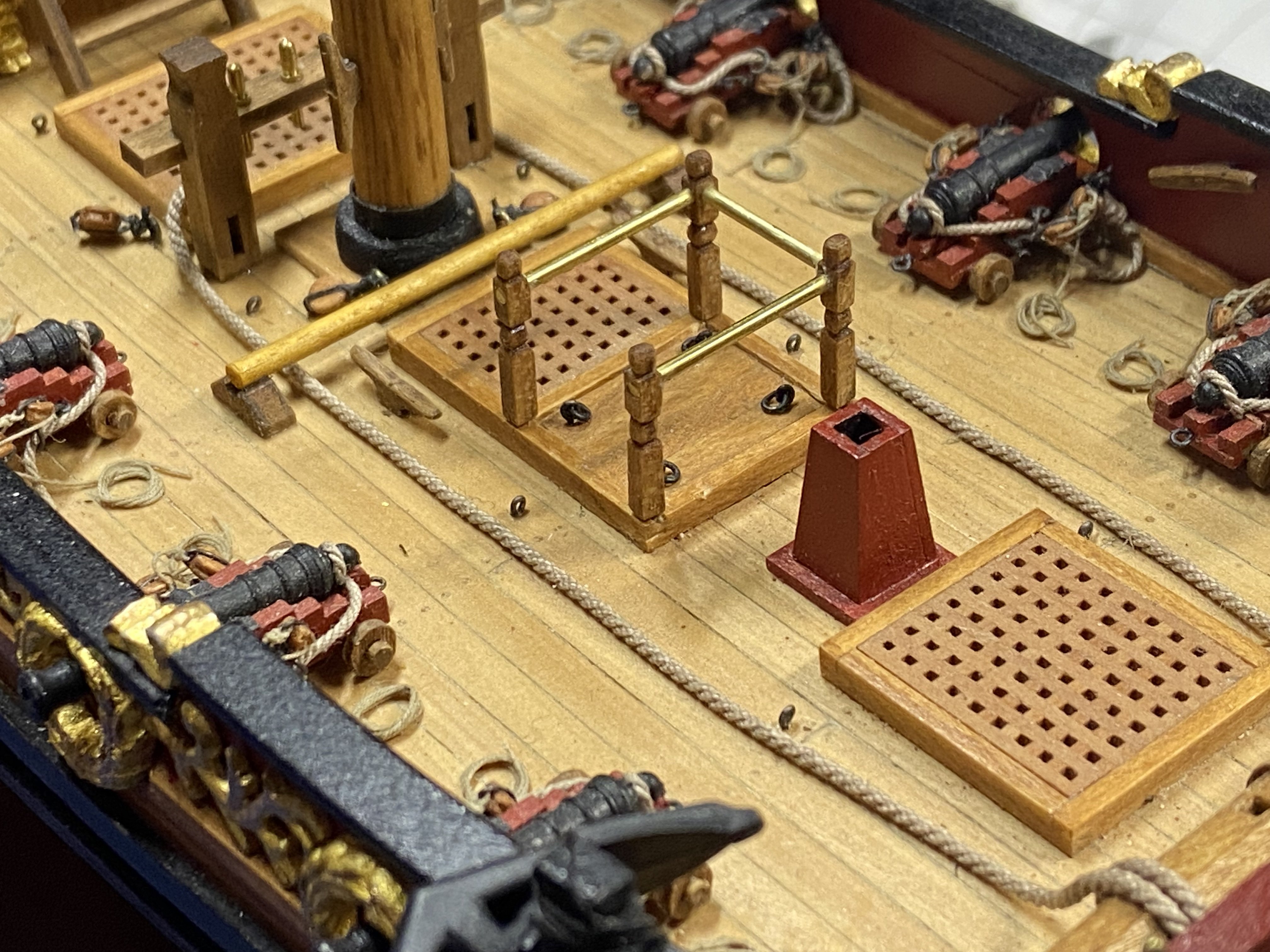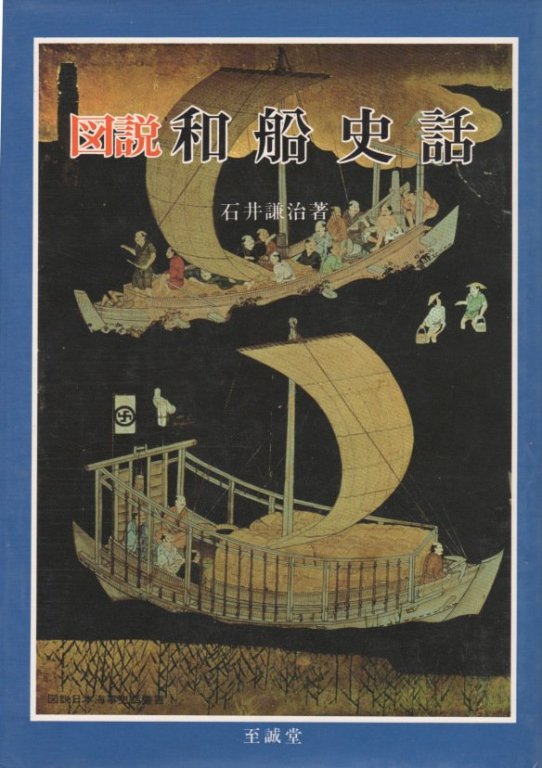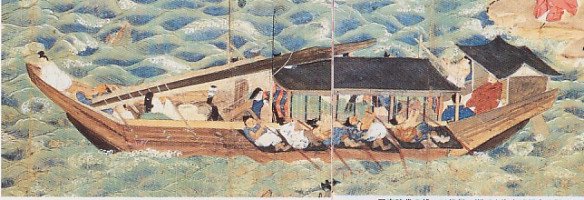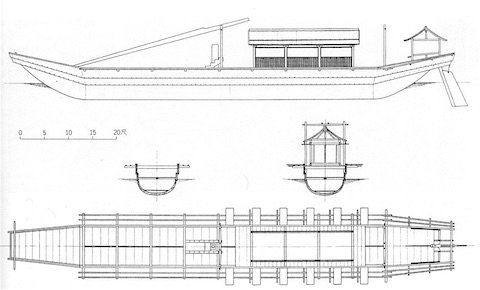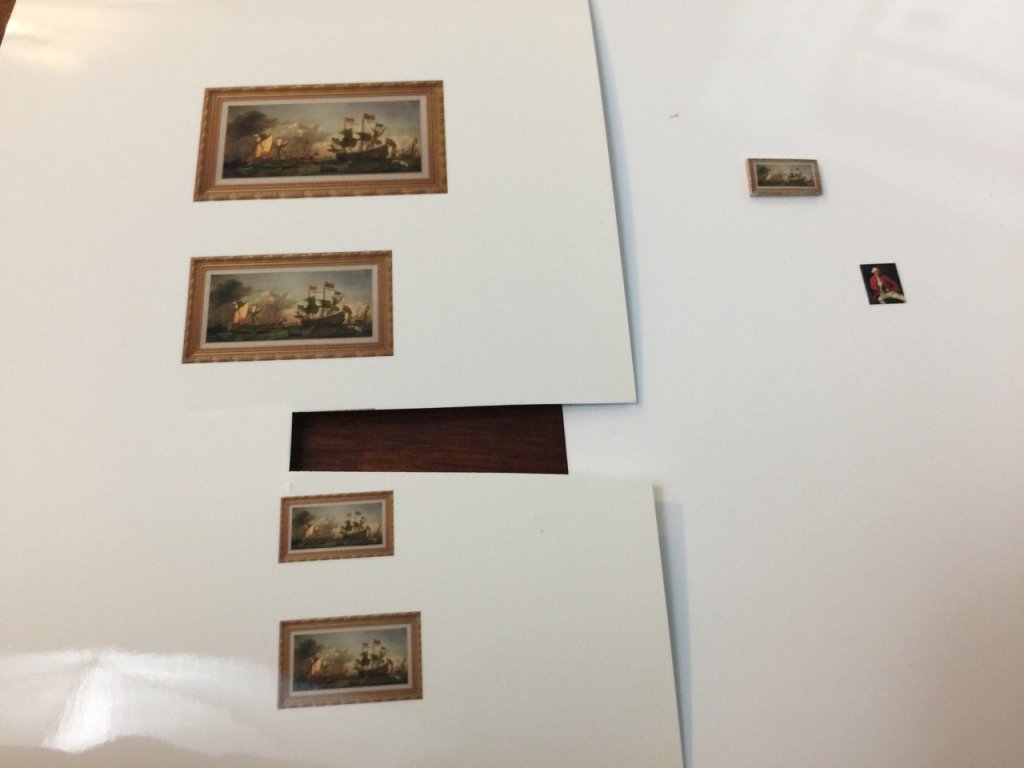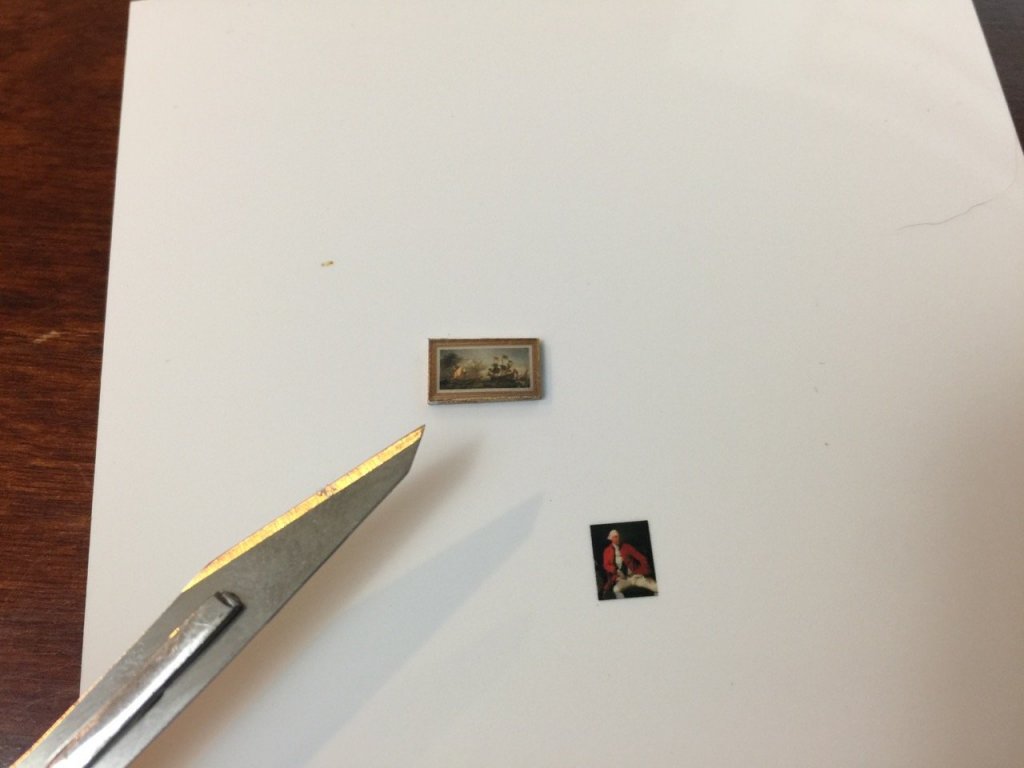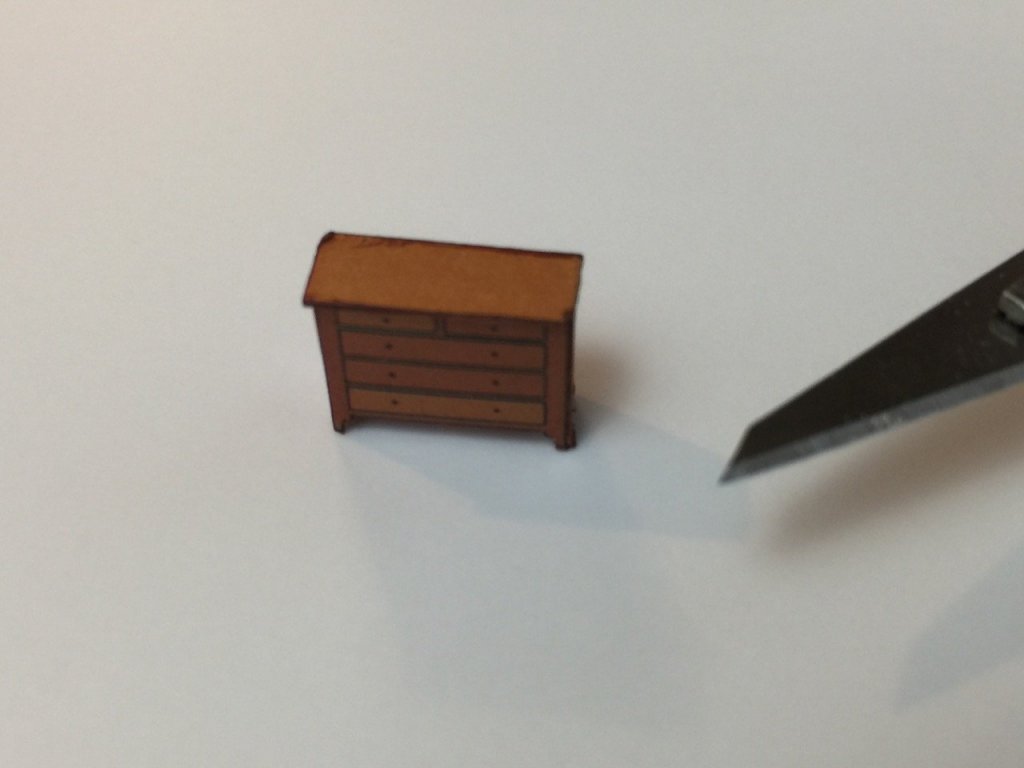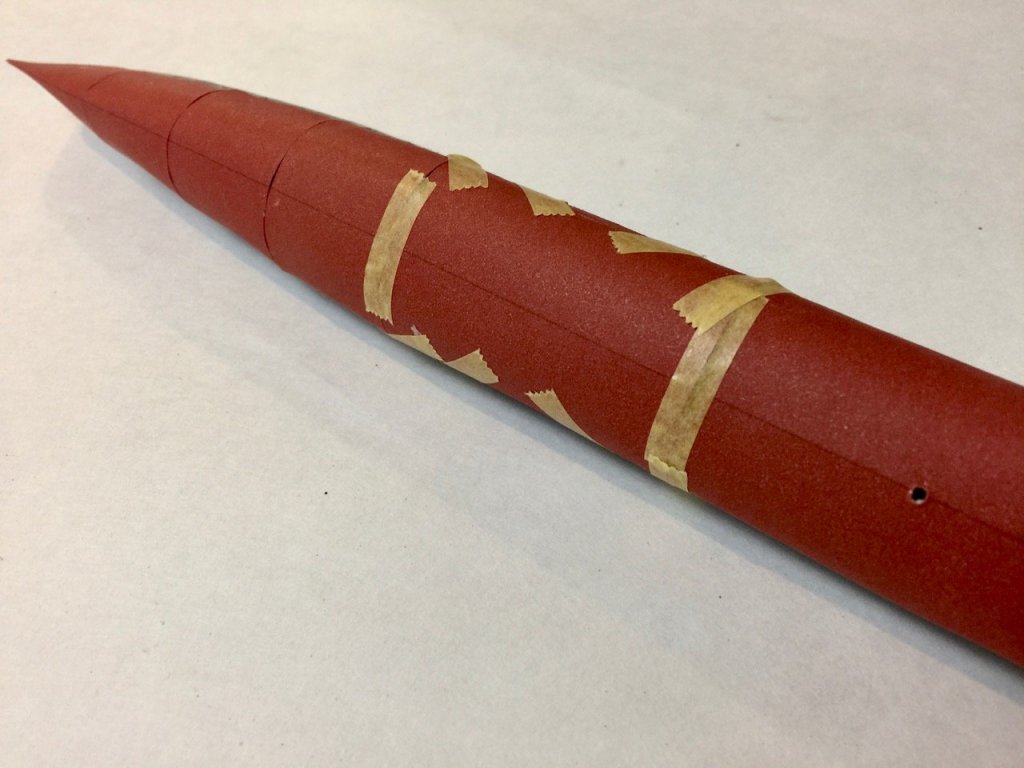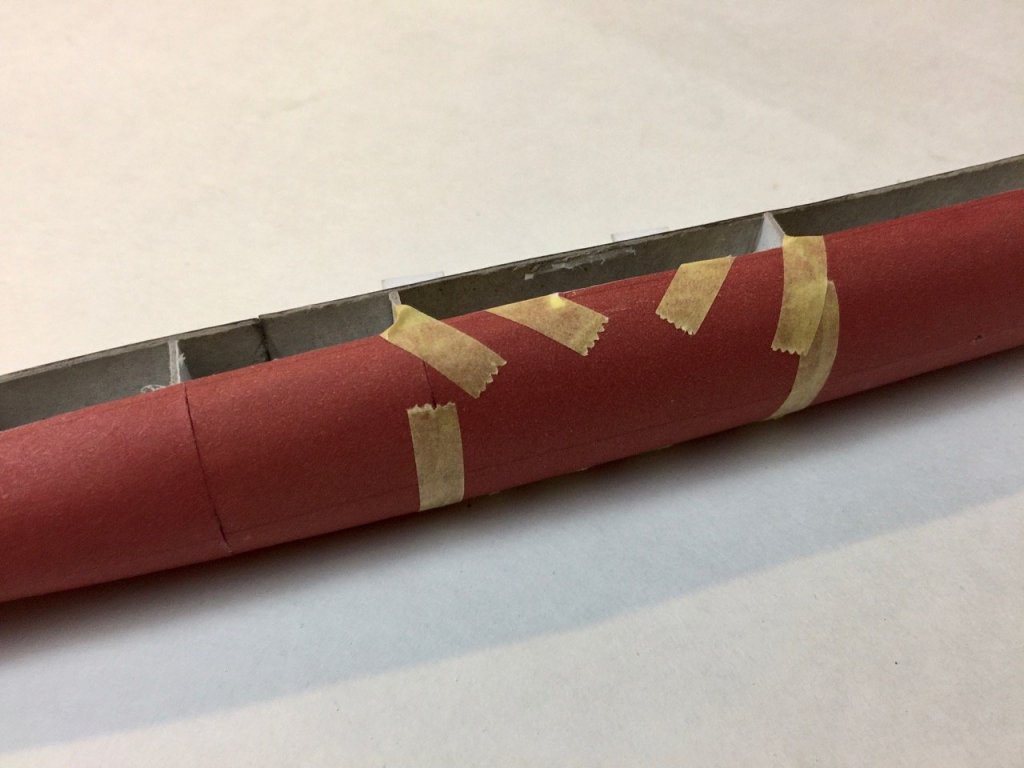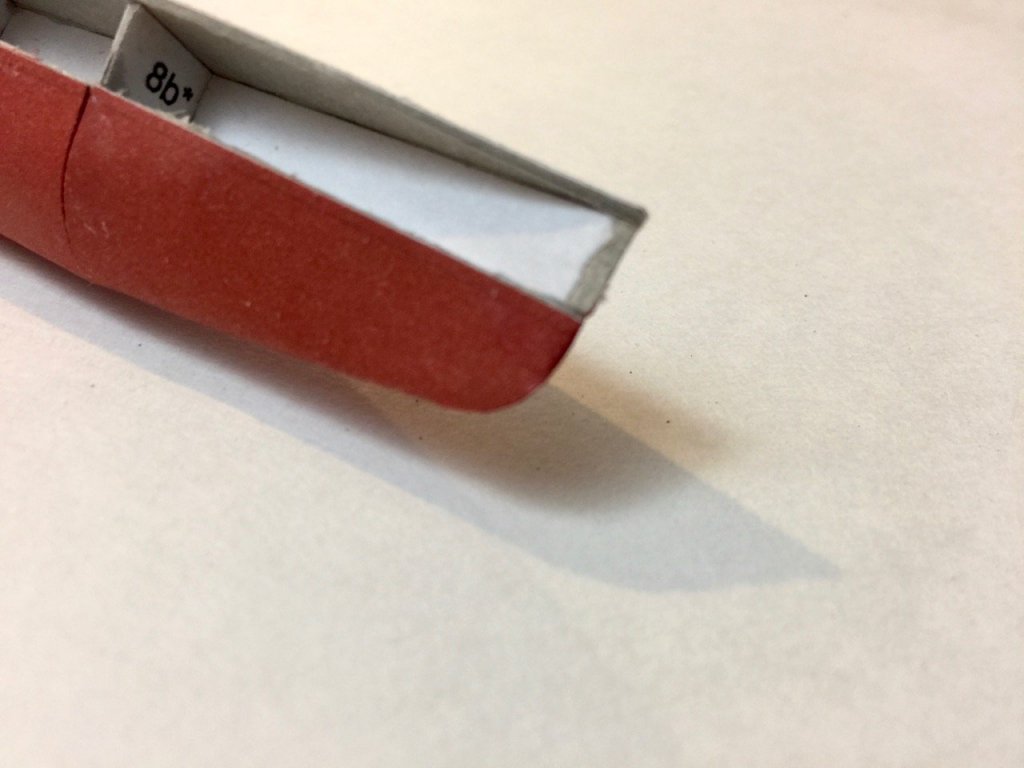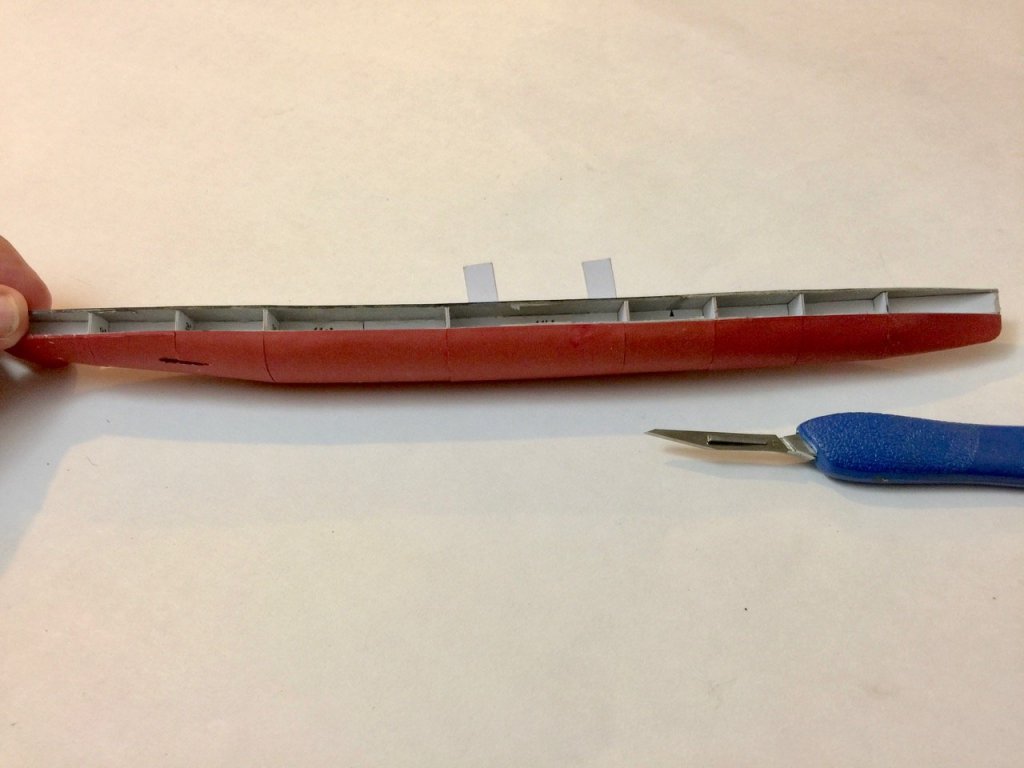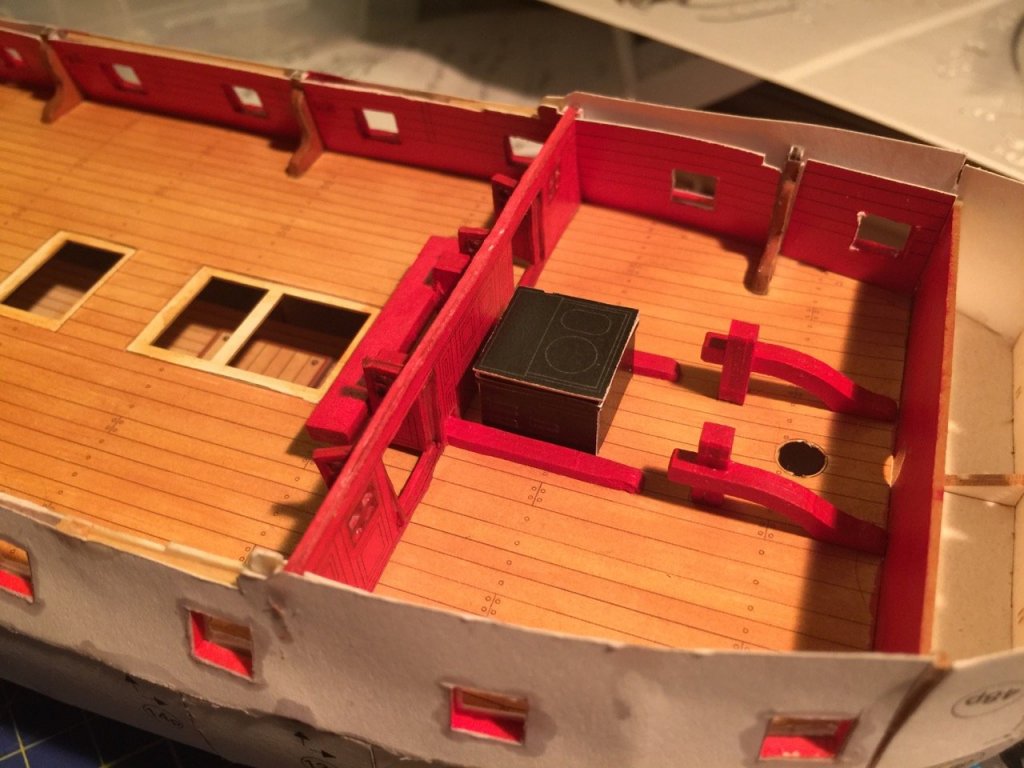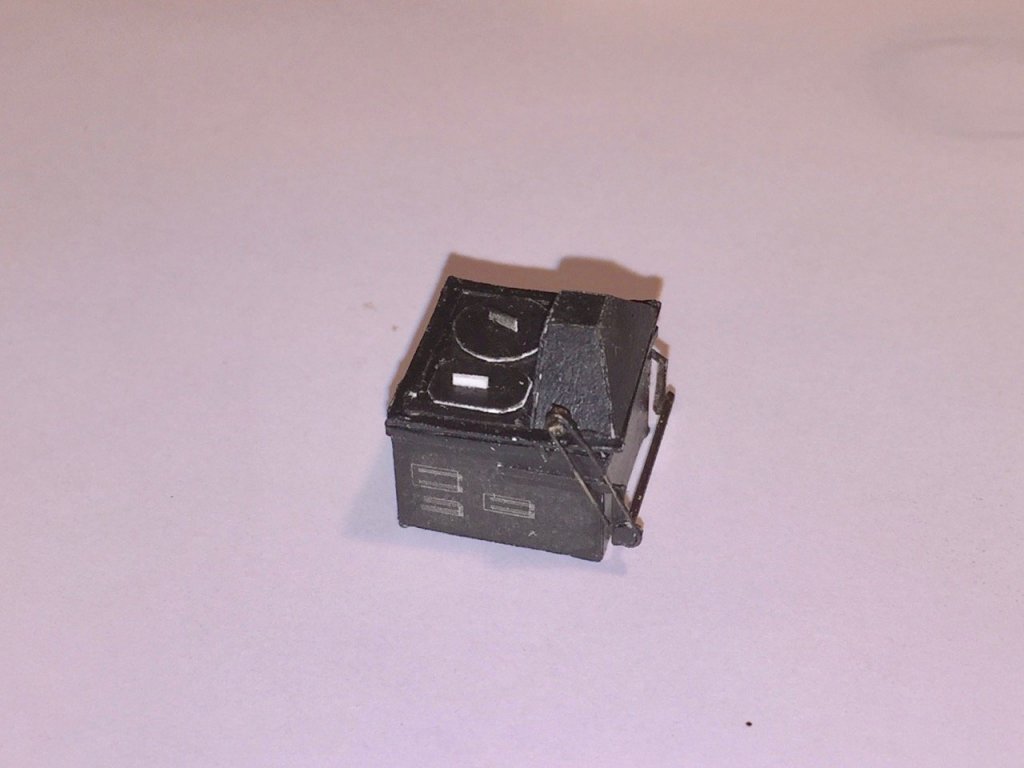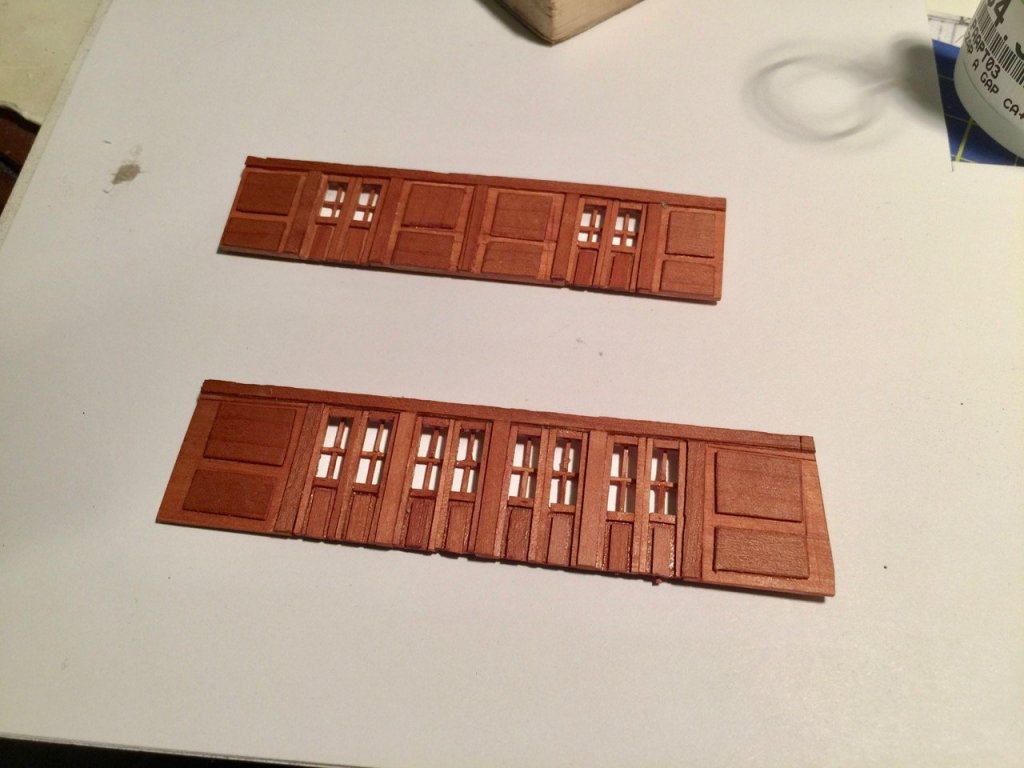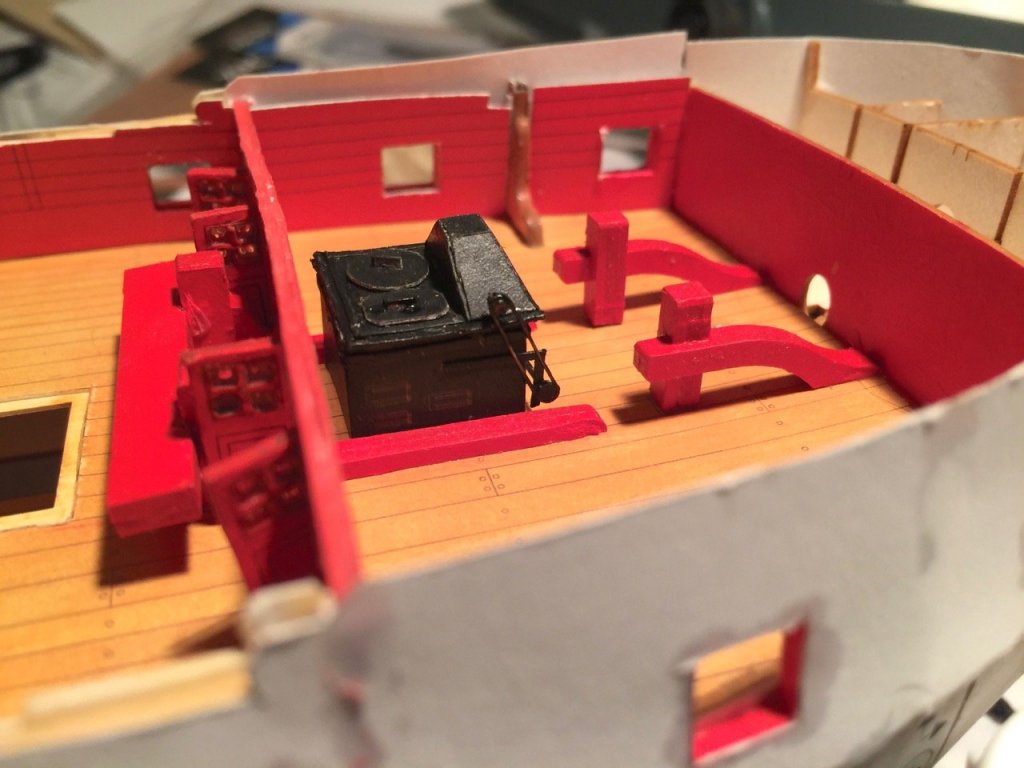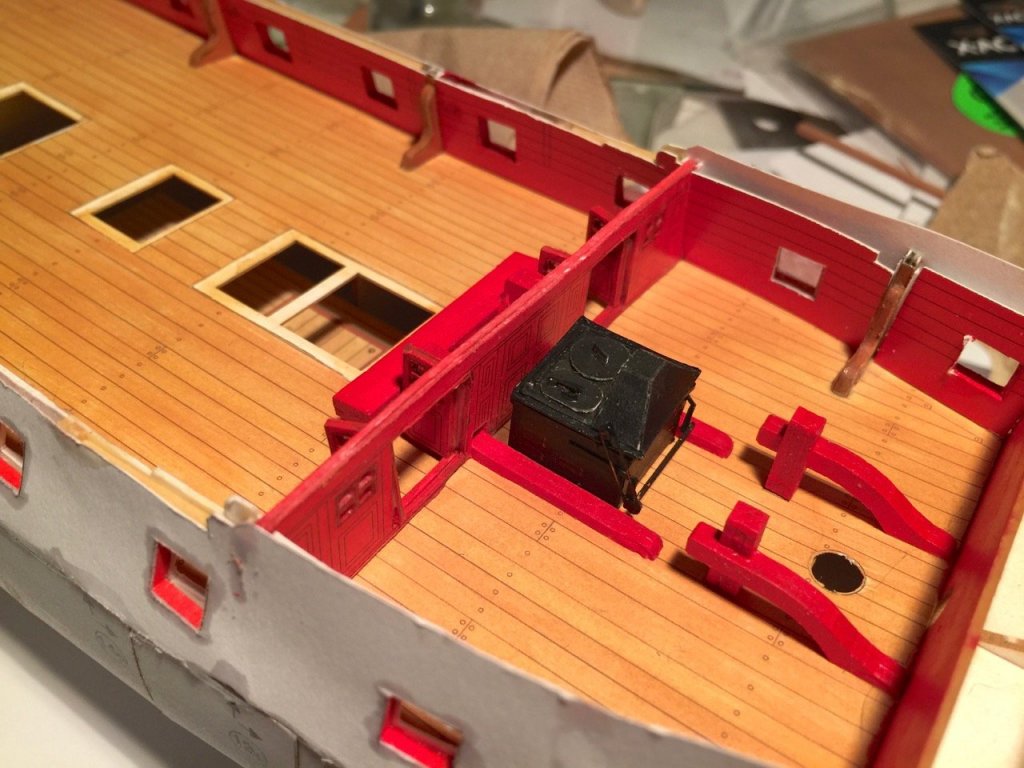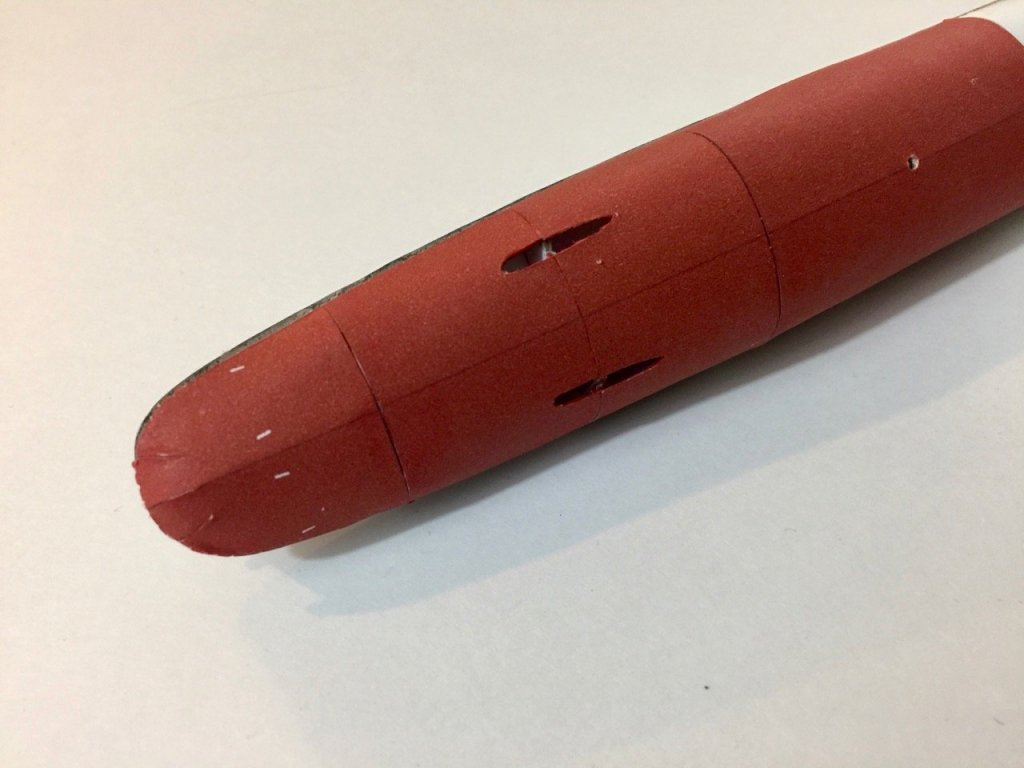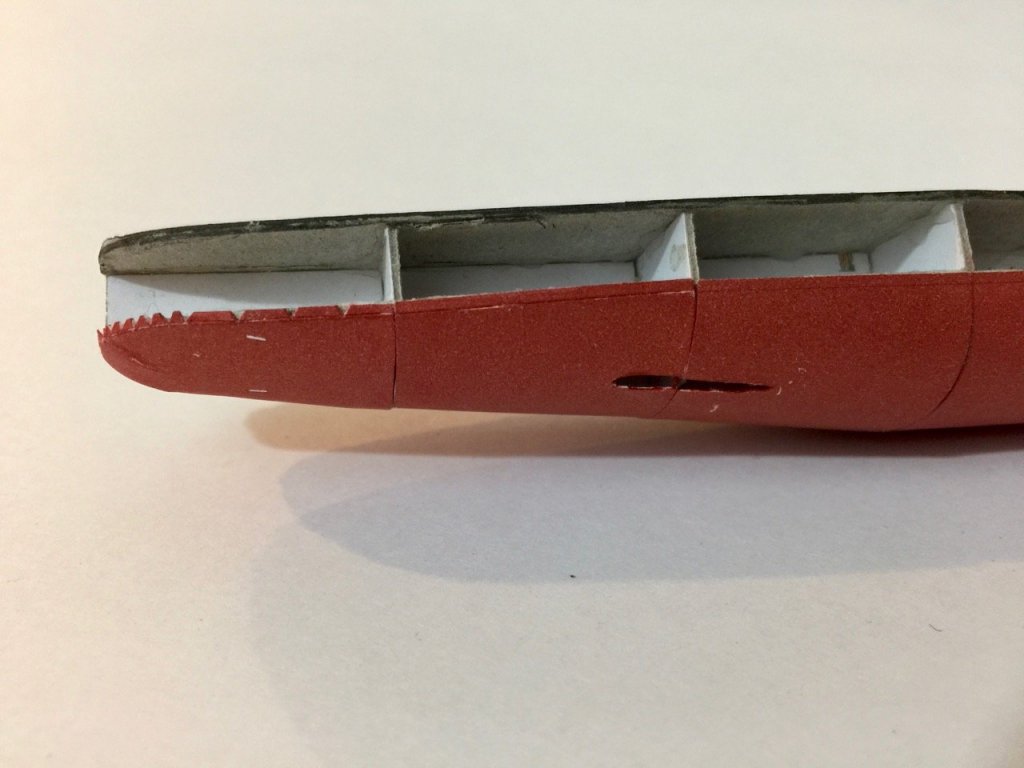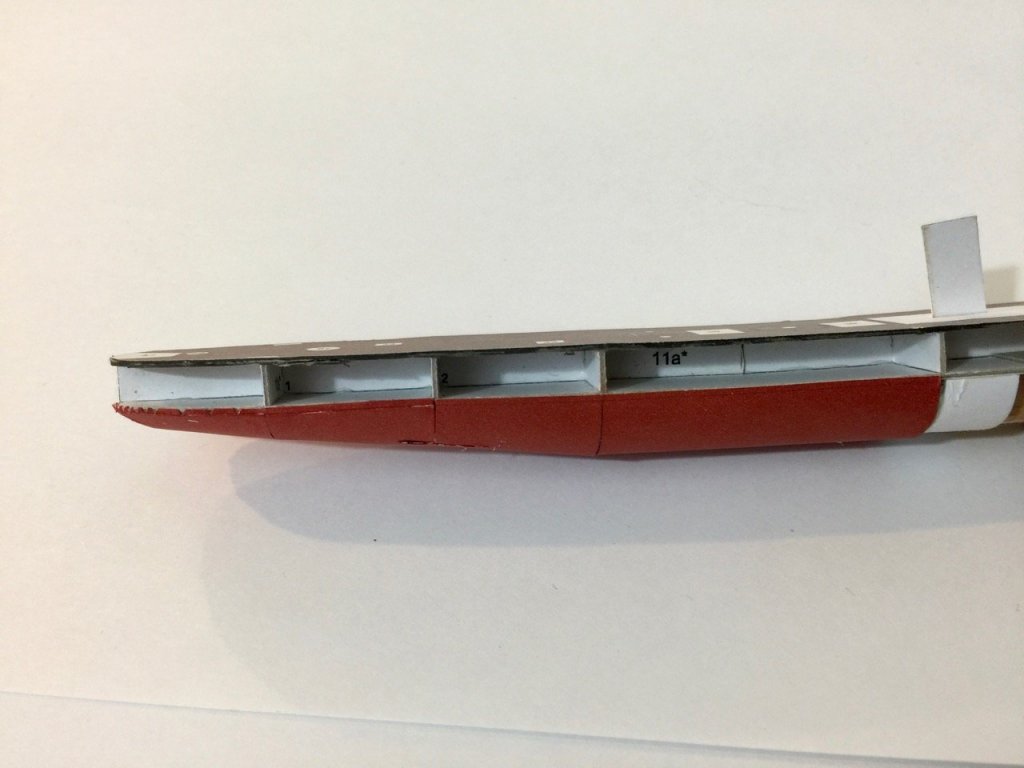-
Posts
1,858 -
Joined
-
Last visited
Content Type
Profiles
Forums
Gallery
Events
Everything posted by catopower
-
Hi Carl, Douglas Brooks focusses on preserving the information of this last generation of traditional wooden boatbuilders, so it's not the kind of thing he has much information about. He did, however, provide me with a couple nice photos of a museum model that appears to be the same model as on the Nippon Foundation website that I mentioned. The model was part of a display that was set up at the carpentry tools museum in Kobe, Japan, in the Spring last year, where he had a boatbuilding project that people could watch live. I recommend visiting his blog, if you haven't already: http://blog.douglasbrooksboatbuilding.com/2016/03/takenaka-carpentry-tools-museum.html It doesn't have anything to do with my model, but his work is fascinating and very important. Hi Dave, I'll try to keep it interesting – Good to see you around!
-
I thought I'd start a new blog here to show what I have been working on in between my paper model "distraction" projects. This too is something of a distraction project, but it's also part of my on-going study of Japanese traditional watercraft. To date, the Japanese boat models I've done are mostly kits, mostly Edo period (1603-1860), and mostly small boats. This model differs in a lot of ways from the others in that it is from the Kamakura period (1185-1333), is a scratch build, and is a larger boat, nearly 100 feet long. The boat type is old enough, or perhaps obscure enough, that there is no specific term to identify it other than as a Kamakura period large sea boat, or in Japanese, Kamakura jidai no dai umi-bune. Something of a long name, so I'll just refer to it as an Umibune, since the term doesn't really seem to used in other contexts. I got interested in the Umibune (that's oo-me-boo-nay) partly because there are few build plans of Japanese watercraft to be found anywhere. The Japanese don't have a history of recording measurements or detailed drawings of their work. Instead these boats were built by craftsmen who kept their techniques secret and passed their work on to their apprentices. So, the only details we really have are from those who have studied relics, paintings, and other boat designs. In this case, my primary source of information is from the late Professor Kenji Ishii who wrote a few books on the subject, and is pretty well considered the "Father of Japanese Boats". Last year, I located the "bible" of traditional Japanese boat research, Professor Ishii's book, published in 1983. The book has been out of print, though it seems to have been supplanted by a two volume set of smaller books that essentially contain the same information, and is called the Illustrated History of Japanese Traditional Boats. It is written entirely in Japanese, which makes research very challenging – I can't really read much Japanese. But, there is the technology and the determination to overcome such obstacles. In addition, there is a website of the Nippon Foundation Library, which hosts online articles on many subjects. This is actually where I first learned about the Umibune. The site showed a small image of a museum model of an Umibune as part of a small chapter on these boats and their construction. It's in Japanese, but here's a link to the site: https://nippon.zaidan.info/seikabutsu/2000/00200/contents/057.htm While this was an interesting find, at the time I ran across it, it was just one of many subjects I ran across in my research. The fact that it was a boat of the Kamakura period kind of put it out of my view, as I was focussing so much on the Edo period, which took place 300 to 600 years later. It was hard enough to study Edo period boats, and I knew even less about the Kamakura period, so I pretty well set the subject aside. It wasn't until I got a copy of Professor Ishii's work that I started taking a more serious interest. You see, Japanese boats are so different from their Western counterparts, that the simple drawings that I could find were mostly inadequate (or perhaps I was more inadequate) for creating a reasonably accurate model. But, Professor Ishii's book included a 3-view diagram of this particular boat, which was more detail available than for most subjects. Now, if the subject were of a more complex design, this diagram might prove next to worthless for model building purposes. But, I realized that the characteristics of this particular boat design allow me to use the 3-view drawing as a build plan. Now I've actually gotten pretty far along on this model, but I thought I'd take the opportunity to document the work here as best I can, so anyone interested can get an idea of what's been going on. If it inspires or connects me with others interested in Japanese traditional watercraft, so much the better.
-
Thanks David, Nantucket Lightship, nice choice! Now, this doesn't mean I won't mix you guys up. Just that I have less to complain about when I DO mix you two up!
-
Yes, and they make some nice aftermarket products for various paper kits too.
-
Hi Alex and Antony, I'm sorry, I only just now ran across this build that you did, so I haven't been around to offer any support during the project. Such a wonderful job you two did together. Very inspiring, and I love some of the techniques I learned here.
- 33 replies
-
- Black Queen
- Mamoli
-
(and 2 more)
Tagged with:
-
Don and David, you two seriously need your own avatars. It's really hard following this thread because your screennames are so similar AND your avatars are the same – I keep having to look and see which one of you is David and which one is Don
-
I'm saddened that joske disappeared shortly after this post. I would really like to have seen a model built from these plans and the frame sets from GPM. I actually have the plans, frame set and super-detail set from GPM for the Santa Leocadia, but have too many other things to do first. I understand the comment earlier about the lack of "side extensions," or quarter galleries. These plan and frame sets only provide a minimal structure for the construction of the models. They are really for scratch builders. I've been of a mind to get the whole set for, say, HMS Enterprize and then get the HMS Enterprize paper model kit, because the structures are identical and you could simply scale-up the paper model kit, which is 1/96-scale, to work out the parts needed to build out those quarter galleries and any other features as well. Anyone know if he moved to another site? I'd still like to see the build.
-
Beautiful looking model David. I know it's a nice kit, I've been eyeing the kit ever since it came out, but your model is looking truly superb!
-
Thanks Danny. Considering the incredible work I'm seeing you do on the Amatsukaze, that's quite a complement! I did start the V108 Torpedo Boat to see what it's like to build a steel hulled, "traditional" paper model kit, but also have been tinkering with another Shipyard kit, this time the 1/96-scale HMS Mercury. You can find it here: Pav, thanks for the nice comments. I did in fact make a case for it, edged with brass. Cases make everything look like museum pieces! I didn't consider the expanding foam, though I've heard people mention it before. I just looked at the hull of my new HMS Mercury build, linked above, and it's actually pretty solid. I suppose it has to do with the high density of bulkheads and the small scale of 1/96. Recalling how the Alert build went, the biggest issue I had in shape of the hull was that you are using wide, flat sheets to cover the compound curve of the hull. But, I'll deal with that later in my HMS Mercury build log. The problem I have with paper models is that they're so inexpensive, relatively speaking, that I have a hard time keeping myself from buying more kits! Well, as long as I don't start them all...
-
Hi JCT, I hope you enjoy it as much as I have. The Pinta is a nice looking model. I saw some photos of a really gorgeous build of the paper kit not that long ago. There are a lot of things you can do to take the kit to the next level, but I found my first kit (the Alert) to be a great learning experience. The one thing I have to say about the Alert, which also applies to Le Coureur I think, is that because the kit uses a layer of lapstrake planking, you end up with three layers of coverings on the hull. Most shipyard kits only use two. Each successive layer gets you closer to a smoothly curving hull, and by the time I added the lapstrake planking, the hull looked nice and fair. For the 1/96-scale HMS Mercury kit that I've been working on, I'm trying to think of ways to improve the planking look. I'm considering lightly scoring the printed planking lines of the hull and painting it, so that it will essentially look like a planked hull. Also, for a future build, I would consider adding some kind of thin strips directly across the frames before adding any layers, just to provide more support for the first hull layer. Anyway, these kits are inexpensive enough to experiment with a little. My one piece of advice is to scan all the parts sheets onto your computer first, so you can print any replacement items you may need. Looking forward to seeing your build log!
-
Well, the Dutch Swedish yacht is a pretty cool substitute. I have the 1/96 Berbice and quay port. The quay port part is really just a simple little addition. The other actual quay port kits are more interesting, but they're designed to fit specific models. In the future, I recommend checking out Ages of Sail. They are the U.S. distributor for Shipyard products and a site sponsor. They have a ton of Shipyard stuff, and Shipyard really wants them to buy more, but the shop has to move some more product first. Paper models aren't that well known here in the U.S., but I think a lot of people would really like them if they tried them. There are times in wooden ship modeling where I'm really tired of dust and splinters and having to go out into the baking hot garage to use the power tools. Don't have any of that with the paper kits!
-
Hi Bob, Interesting. Looks legit. The fact that they show the Bellona and La Belle Poule on the back cover suggest it's is an old, out of print kit. Nice find! To clarify. The current Berbice kit comes in two forms: 1/96 Paper Model kit with Quayport. Paper Model kits are like what you just bought – you cut out all the parts yourself and you supply dowels and rigging line, sails and whatever other fittings you choose to use instead of the paper parts. The current kit include laser-cut skeleton, which speeds up build time a lot. The current version has a Quay port. Looks like they replaced the old Dutch Swedish Yacht with the Quay port in the current kits. 1/72 Laser Cardboard kit (now called Laser Cutted kits). Nothing is printed, except for flags and some decorative details, like friezes if they were on the ship. All parts are laser cut, includes brass cannon barrels, any necessary resin scroll work and figurehead, laser-cut blocks and deadeyes that you assemble yourself (like Chuck's laser-cut stuff), rigging line, dowels, copper tape for the hull, paints, brushes, razor blade, no glue. Old versions had wooden blocks and deadeyes and included glue. This kit does NOT include a quay port, but you can buy one separately if you want. Anyway, I'll be looking forward to seeing your build!
-
Hi Bob, Slog, Shipyard kits list the laminating thickness on the main instruction diagram. Next to the parts that need laminating, there is a white disc with a number and three dark lines under it. The three dark lines alert you that the part needs to be laminated, the number shown is the final thickness of the part. Bob, I'm confused about the bonus kit. Is it a completely separate kit? Also, the only Berbice kit in this scale that Shipyard makes comes with the Quayport. Also, there is no French language in their kits, only English, German and Polish. Where did you buy your kit? I'm in contact with the owner of Shipyard and he would have mentioned if he had developed a new (yacht) kit.
-
I've been playing around with making slide show videos on Youtube and the Tosa wasen kit is officially my second video. If you want to see about 5 or 6 weeks of work compressed into a 3-1/2 minute video, with music, please check it out: https://youtu.be/1M1qmJFEMOo
- 51 replies
-
- wasen
- thermal studio
-
(and 1 more)
Tagged with:
-
Hi CDW, Yeah, the metal handles hurt my fingers after a short time. Mine is a Swann Morton handle packaged and distributed by Modelcraft Tools - "PKN5002/11 Plastic Scalpel Handle and Swann Morton No.11 blades" I know they have them, as I've seen them in the shop (It an Ages of Sail and Modelcraft Tools showroom) They're only $7 or $7.50 with some blades. http://www.modelcrafttoolsusa.com/knives-blades-cutters/1055-3-scalpel-w-11-blades-5-pkn5002-11.html You can get it from Ages of Sail too, and shipping will probably be a little cheaper too, but it's not on their web page, so you'll have to call them to order - 510-889-6000. You can also email them, but I don't like posting email addresses on the Internet for fear of generating junk mail. But, you can get it off their contact page: http://www.agesofsail.com/contactus.html Now that you mention it, I've never even thought about how uncomfortable it is to use a scalpel since I've had this one. Yes, definitely get one – you'll love it.
- 100 replies
-
- digital navy
- v108
-
(and 2 more)
Tagged with:
-
Okay, here's a very brief update again. I don't know why it's so easy to get sucked into a paper project, but it is... About a week or so ago, I made this chest of drawers for the Captain's day cabin. The kit photos showed a couple items sitting atop, and I'm contemplating a rolled up map, maybe a book. Yeah, it gets addictive. Just today, I set it into place to see how it would look and above it, on the partition wall, was an empty space, and I thought "That would be a great place to hang a painting". Next thing I know, I'm on the Internet looking for paintings appropriate to a British ship of 1778 or later. I hunted down a Willem Van de Velde the Younger, Royal visit to the fleet in the Thames Estuary, 6 June 1672. I also found a nice portrait of King George III, but settled on the former. I found a site that sold framed artwork that allowed you to see what the painting would look like with a choice of frames. I figured that tastes were more toward what we would consider gaudy. So, I did a screen grab. I probably should have photoshopped out the matte, but didn't think of it. I don't know if I really care, though I might if people could really see the painting clearly. The pic in the screen grab had a watermark, so I used photoshop to overlay another image I found that didn't have one, then proceeded to size it appropriately. A put a few different sizes on a small piece of photo paper, which I printed on my inkjet. Now, if I had been more ambitious, I might have also built up the frame a bit, so it didn't look so two dimensional. But, I did laminate the print to card stock to make it thicker. I also edged this with a gold paint pen. If I'm not happy with this when I go to install it, I do have a somewhat larger image I printed earlier without a frame. I could always build up a frame and use that instead. Anyway, it was yet another fun distraction.
-
Thank you Pav. This is the easy part, I think. But, I'll gladly accept any compliments I can get!
- 100 replies
-
- digital navy
- v108
-
(and 2 more)
Tagged with:
-
It didn't take long to finish the hull below the waterline. I didn't add the shafts, props or rudder. I thought I should at least wait until I have the rest of the hull done before I go back to do that. Since I had already finished the four sections aft, I figured it might be best to start at the bow and work my way back. That way, the bow was sure to come out correct and I think it looks good. I used little pieces of Tamiya tape to hold pieces into place while the glue dried – I used Aleene's Tacky Glue for everything here. When it was dry enough, I pulled the tape, revealing the finished hull. Certainly, my work is not perfect, but I'm having fun, and, so far, it doesn't look terrible... By the way, I took this model to three local ship model meetings, and people were VERY interested in the model. I love the fact that because these part are printed on my own printer, if I screw something up, I can just print another parts sheet. There are an awful lot of teeny parts, though. I did a rough count and I think I got to around 250 pieces. So... 31 down, 219 to go!
- 100 replies
-
- digital navy
- v108
-
(and 2 more)
Tagged with:
-
Hi Carl, it also ties me to the build too. I can't write something like that and then just leave it at that. Just a little progress, but it's something. Plus, it was a pretty neat assembly – the Brodie stove in the forecastle. The instructions were a little messed up in one spot, showing the top of the stove mounted backwards. Another drawing showed it correctly after I'd done the work. Since I wanted to make a slight detail modification anyway, I cut the top free and reattached it in the proper orientation. I also decided to insert a small block of basswood inside to make the stove body more solid before cutting the top off and I'm glad I did. Here's an early pic showing the basic structure. Note how I have it in backwards at this point. It's actually the top that was backwards. Below is the rebuilt stove. There was a very 2-D looking chain assembly printed in the kit. I replaced this with wire and the end of a small dowel that I filed down. After I saw what the real thing looked like, I added the shaft onto the arms. You'll note the white cover handle. This is again a modification of the kit, and the one I originally made popped off during "surgery", and the new one hasn't been painted yet. The completed stove is shown here, temporarily in place. I want to figure out what I need to do for the carriage guns before I install it permanently. Below is another view of the stove temporarily in place. While not part of this model, working in paper led me to making a small detail that will go into the cabins at the stern of an HMS Victory model that I've been working on. These clearly are rough and not accurate, nor are they meant to be. I just want an observer to see a representation of interior space, should they manage to look inside the gallery lights. Again, this is really a direct result of working with these paper kits, since they actually include these kinds of details. Also, the pattern came from an HMS Victory paper model kit. I enlarged a scan of these partitions to the scale of my model and used those as templates for making them out of swiss pear. At this stage, there are really different aspects of the ship model I can choose to work on. I have some furniture to make for the great cabin. That's actually in progress now and I'll probably be posting some pics of those items next time. At least some of them. I'm also thinking about finishing the deck by completing the deck hatches/gratings. I also have to make some cannon carriages and possibly I'll try making the barrels from paper. But, on my HMS Alert, I just used brass cannon barrels. The matter of which color scheme to use is also a decision I'll need to make very soon. The kit includes parts printed for an 1778 color scheme, as well as parts for an early 1800s color scheme. If I go with the 1800s scheme, I'll probably copper the lower hull. If the 1778 scheme, I may want to come up with some form of planking patterned after the nicely printed planks of the sheets that will cover the existing hull.
-
Maturin, at least you have the Puritan already. I'd like to build that, but I'm in the same fix as you, and there's only one left, so I don't expect it's going to be there for long. I also really have been interested in building the Yacht Mary, ever since I saw the Ships in Scale article by Jean Eckert, long ago. They're gone now, but fortunately, I managed to get my hands on one. Clare
-
Hey, check this out! I made my first Youtube video, a slideshow really, of the Shinmei-zukuri build. I think it turned out pretty nicely, so I think I'm going to have to do the same for my other builds. But, the most well documented are the fairly recent Woody Joe kits I built. Would be nice to have a square-rigger or at least a schooner in there somewhere. Clare
-
Thanks for your input Pav and Chris. As it turns out, when I posted about the lower hull, my mind was still in the Shipyard kit mode. This kit, and maybe those of all steel-hulled ships, has a single piece that wraps from the waterline on one side of the ship to the waterline on the other side. So, it really does become necessary to do the bottom of the hull first. Here's my attempt at adding the first four parts of the lower hull. There are five more to go. A couple things I've noticed. First, I think it may be unnecessary to try to reinforce the hull like I did. This is a small model and the bulkheads are mostly just over an inch apart, except amidships, where they may be about 2 inches apart. If anything, the reinforcement just got in the way and needed to be trimmed down. The second thing I noticed about this kit is that these lower-hull pieces overlap the waterline "deck," and will completely conceal the edge. My only concern is at the stern, where the bottom of the printed boot-top may extend down just a tad much. But, at this scale, it will probably be fine unless someone is taking a magnifying glass to it. I did paint the edges of the lower-hull pieces with some darkened red acrylic, and also did a little touch-up on afterwards. You can see the seam pretty well, but I may just leave it that way, at least on this model. I wanted to get at least this far for a get-together of ship modelers in Vallejo, California. One of the members, built the Trumpeter kit of the Iowa now on display at the USS Iowa Museum in San Pedro. He's now building the Bismark in the same scale of 1/200, which is the same as this kit, and I wanted to do a size comparison. Unfortunately, he just got home from a long drive the night before and couldn't make it. Now, I'll have to wait for the next gathering, which isn't for another 3 months. But, I imagine this should be done by then, as long as I have time to keep working on it. Clare
- 100 replies
-
- digital navy
- v108
-
(and 2 more)
Tagged with:
-
Thank you Zoly, Druxey! Druxey, don't feel bad about the posts not being on your radar, I often fly too LOW... Mark, Mark and Chris, no worries about hijacking. I was wondering the same thing about Mark's location. I wonder how many ship modelers are in that general vicinity? If there were a ship modelers' gathering there, I'd definitely consider making the trip. Nice country up there! Meanwhile, I've set aside HMS Mercury to get some other things done, but it's darned hard to stay away! I glued up some parts for the great cabin furniture and ship's stove. I'll post some pics in a week or two after I have some of those things completed. Clare
About us
Modelshipworld - Advancing Ship Modeling through Research
SSL Secured
Your security is important for us so this Website is SSL-Secured
NRG Mailing Address
Nautical Research Guild
237 South Lincoln Street
Westmont IL, 60559-1917
Model Ship World ® and the MSW logo are Registered Trademarks, and belong to the Nautical Research Guild (United States Patent and Trademark Office: No. 6,929,264 & No. 6,929,274, registered Dec. 20, 2022)
Helpful Links
About the NRG
If you enjoy building ship models that are historically accurate as well as beautiful, then The Nautical Research Guild (NRG) is just right for you.
The Guild is a non-profit educational organization whose mission is to “Advance Ship Modeling Through Research”. We provide support to our members in their efforts to raise the quality of their model ships.
The Nautical Research Guild has published our world-renowned quarterly magazine, The Nautical Research Journal, since 1955. The pages of the Journal are full of articles by accomplished ship modelers who show you how they create those exquisite details on their models, and by maritime historians who show you the correct details to build. The Journal is available in both print and digital editions. Go to the NRG web site (www.thenrg.org) to download a complimentary digital copy of the Journal. The NRG also publishes plan sets, books and compilations of back issues of the Journal and the former Ships in Scale and Model Ship Builder magazines.

